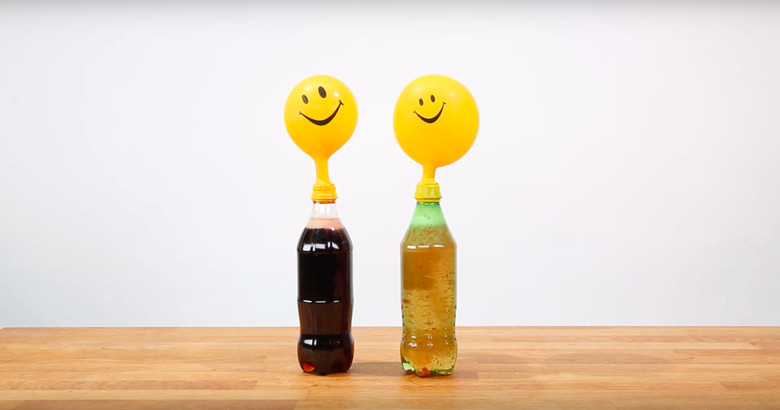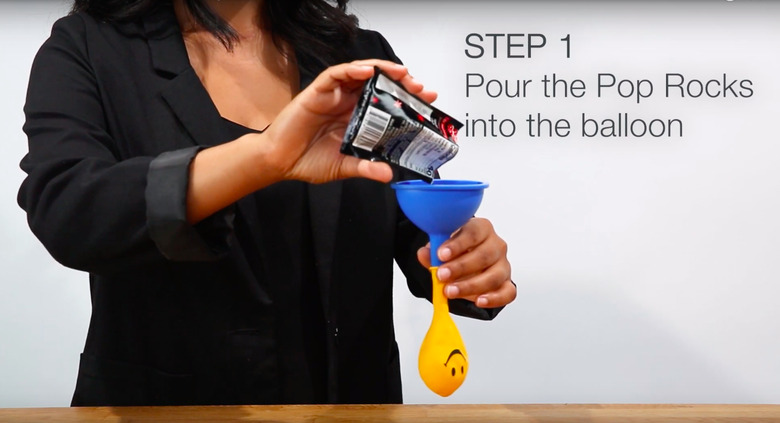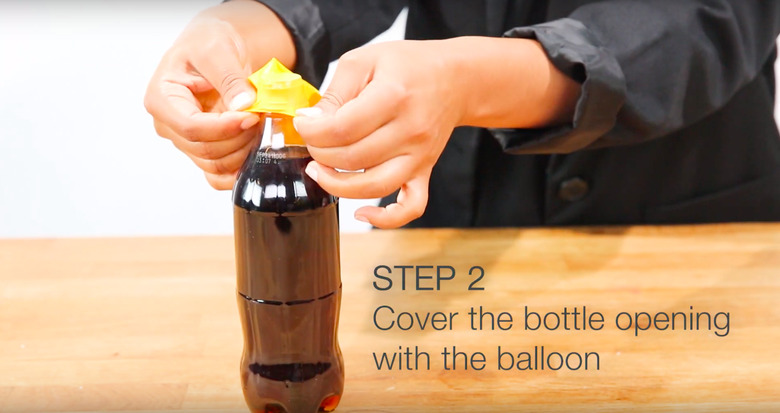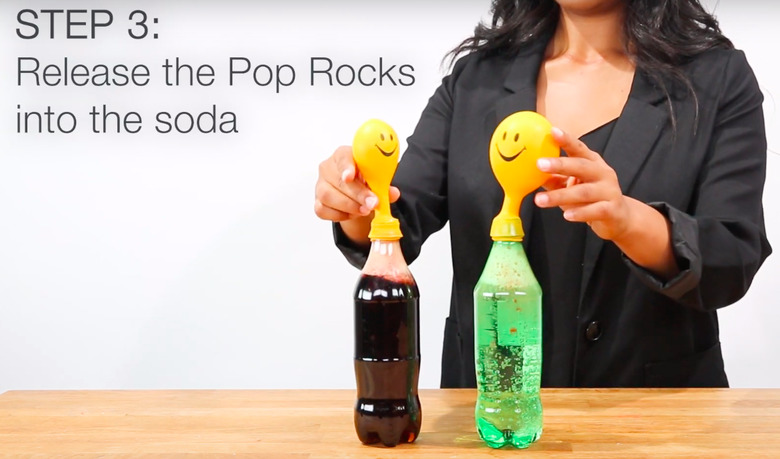Science Projects That Have To Do With Pop Rocks
Pop Rocks are a hard candy produced by Zeta Manufacturing. According to the company's website, Pop Rocks are similar to other hard candies, with sugar, lactose, corn syrup and flavoring. The difference that gives Pop Rocks their pop comes from the addition of carbon dioxide gas between the boiling and cooling stages. Tiny carbon dioxide bubbles are trapped in the candy during the cooling process. The bubbles pop when the candy is melted.
Basic Pop Rocks Demonstration
Basic Pop Rocks Demonstration
A basic demonstration of the interaction of carbon dioxide bubbles with water, sodium bicarbonate and citric acid uses Pop Rocks, water, baking soda, food coloring, and lemon juice. The Pop Rocks website presents a version of this experiment called "Harry Potter's Pop Rocks Potion." Students start with a small container or test tube half filled with water, and then watch the chemical reactions that take place as each additional ingredient is added. According to the website, the addition of citric acid, the final ingredient, should cause the mixture to bubble and overflow.
Variations on Basic Demonstration
Variations on Basic Demonstration
Students can extend the experiment by varying the amounts of each ingredient and observing the resulting reactions. For example, will more baking soda make a more dramatic display, or does the strength of the reaction depend more on the amount of citric acid? How many Pop Rocks will provide the right amount of carbon dioxide, and does more of the candy in proportion to the other ingredients create a stronger reaction? The Pop Rocks website states that although natural coloring agents such as beet juice or cochineal do not result in colors that are as vivid, the chemical reaction is stronger. Students may wish to experiment to find out whether this is indeed true, and may want to research the reason for the difference.
Pop Rocks, Soda and Balloon Experiment
Pop Rocks, Soda and Balloon Experiment
Contrary to an urban myth that has circulated since Pop Rocks entered the candy market in the 1970s, ingesting Pop Rocks along with soda will not cause a child (or adult) to explode. However, because both Pop Rocks and soda both contain carbon dioxide, mixing the two releases more of the gas.
1. Pour the Pop Rocks into the Balloon
Using a funnel, pour one bag of Pop Rocks candy into a balloon. Tap the funnel to deposit any excess Pop Rocks; they're sticky!
2. Cover the Bottle Opening with the Balloon
Make sure the ballon is securely fastened around the bottle. You don't want any soda leaking.
3. Release the Pop Rocks into the Soda
The release of carbon dioxide from both the Pop Rocks and the soda causes the release of the gas into the balloon, partially filling it.
Interactions of Pop Rocks and Liquids
Interactions of Pop Rocks and Liquids
An experiment on Stem Planet's website allows students to explore the interactions between Pop Rocks and liquids with varying degrees of acidity. Students pour a small amount of Pop Rocks candy into three bowls, and then add soda (acidic), water (almost neutral), and dishwashing liquid (base). In addition to observing the reaction of the carbon dioxide in Pop Rocks to the different liquids, students can notice which of the reactions seems most similar to the melting of the candy in the human mouth.
Cite This Article
MLA
Ezell, Teressa Rose. "Science Projects That Have To Do With Pop Rocks" sciencing.com, https://www.sciencing.com/science-projects-do-pop-rocks-7926846/. 17 May 2019.
APA
Ezell, Teressa Rose. (2019, May 17). Science Projects That Have To Do With Pop Rocks. sciencing.com. Retrieved from https://www.sciencing.com/science-projects-do-pop-rocks-7926846/
Chicago
Ezell, Teressa Rose. Science Projects That Have To Do With Pop Rocks last modified August 30, 2022. https://www.sciencing.com/science-projects-do-pop-rocks-7926846/




